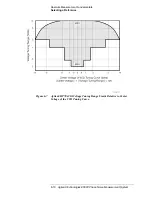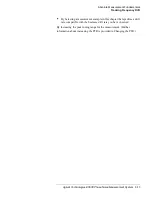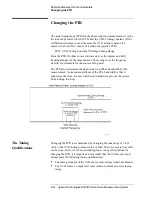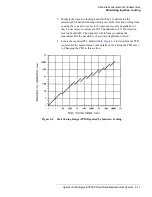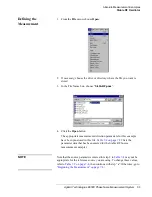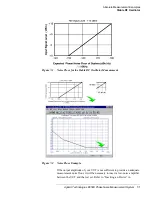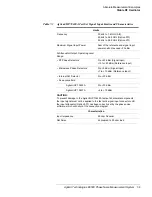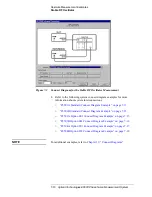
6-18
Agilent Technologies E5500 Phase Noise Measurement System
Absolute Measurement Fundamentals
Inserting a Device
Inserting a Device
An Attenuator
You may find that some of your measurement setups require an in-line
device such as an attenuator in one of the signal source paths. (For example,
you may find it necessary to insert an attenuator at the output of a
unit-under-test (UUT) to prevent it from being injection locked to the
reference source.) The primary consideration when inserting an attenuator is
that the signal source has sufficient output amplitude to maintain the
required signal level at the Agilent/HP 70420A’s phase detector input port
(as shown in
). The signal level required for the measurement
depends on the noise floor level needed to measure the UUT.
shows the relationship between the signal level at the R port and
the measurement noise floor.
Figure 6-9
Measurement Noise Floor Relative to R Port Signal Level.
An Amplifier
If a source is not able to provide a sufficient output level, or if additional
isolation is needed at the output, it may be necessary to insert a low
phase-noise RF amplifier at the output of the source.
Note, however, that the noise of the inserted amplifier will also be summed
into the measured noise level along with the noise of the source.
The Agilent/HP 70427A Option K22 dual RF amplifier was designed
specifically for this purpose. This instrument is the preferred solution for
tests requiring an external amplifier.
The following equation can be used to estimate what the measurement noise
floor is as a result of the added noise of an inserted amplifier:







